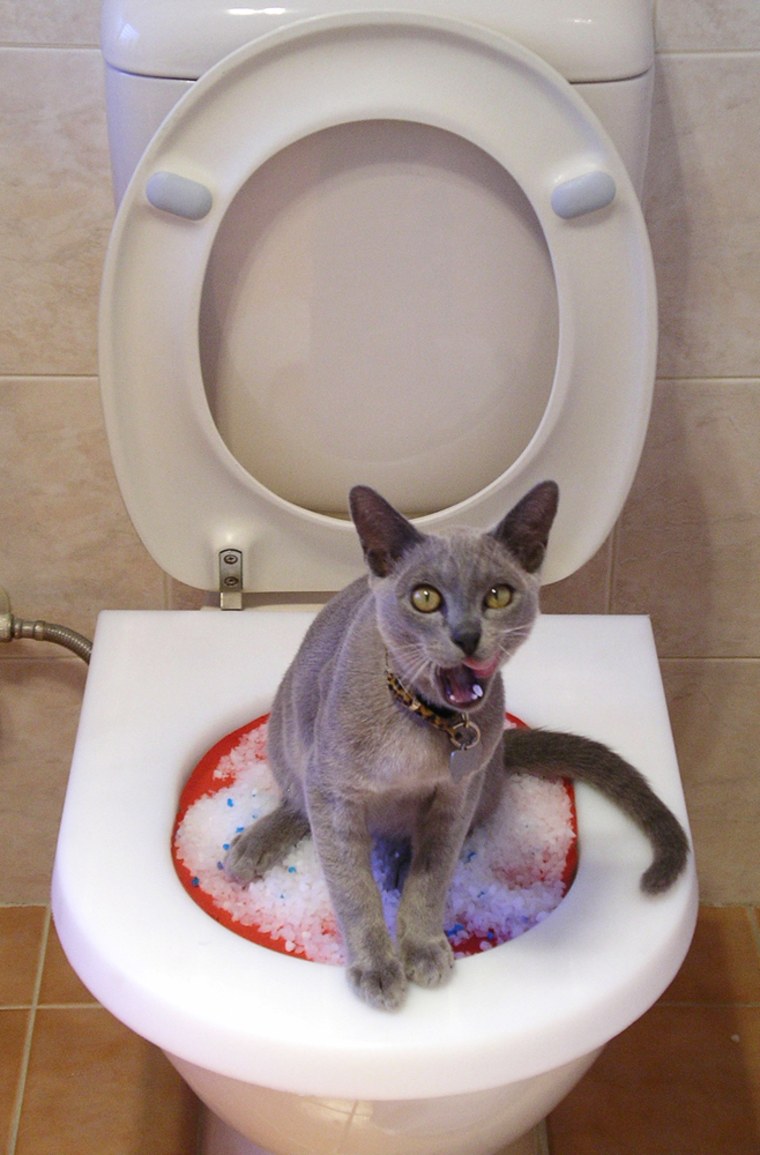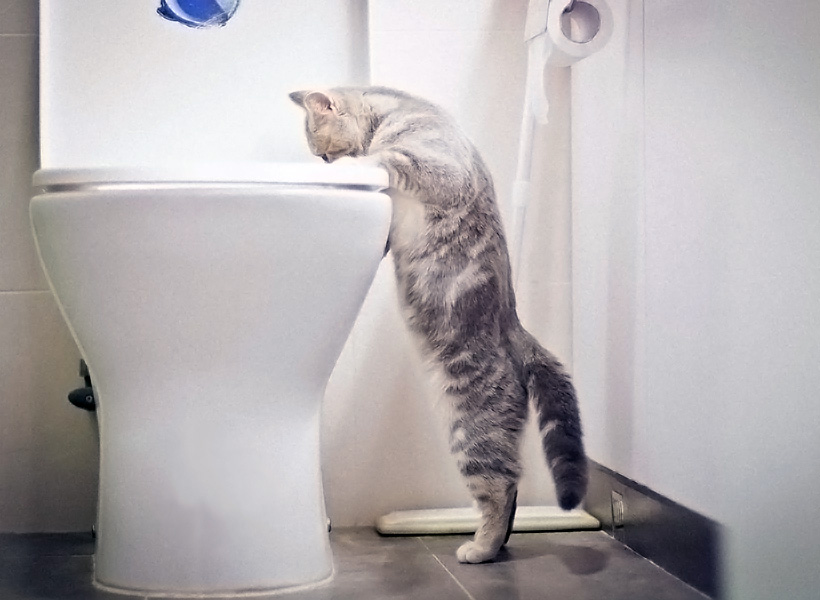Why You Need to Avoid Flushing Animal Waste Down the Toilet
Why You Need to Avoid Flushing Animal Waste Down the Toilet
Blog Article
How do you feel about Can You Flush Dog and Cat Poo Down the Toilet??

When it concerns throwing away waste, specifically animal waste, lots of people usually resort to the hassle-free option of flushing it down the commode. However, this seemingly simple solution can have significant repercussions for the atmosphere and public health. In this write-up, we'll discover why flushing animal waste down the bathroom is a negative idea and supply alternate approaches for correct disposal.
Intro
Proper waste disposal is crucial for preserving ecological sustainability and public health. While it may appear safe to purge animal waste down the bathroom, it can bring about various concerns, both for the environment and human well-being.
Dangers of flushing animal waste
Environmental effect
Purging animal waste presents harmful microorganisms and pathogens right into waterways, which can negatively impact aquatic ecosystems. These microorganisms can contaminate water sources and damage aquatic life, interfering with delicate environments.
Public health issues
Animal waste contains hazardous germs such as E. coli and Salmonella, which can present major wellness risks to human beings. Purging animal waste down the toilet can pollute water materials, causing the spread of diseases and infections.
Alternatives to flushing
Rather than purging animal waste down the toilet, there are several different disposal approaches that are extra eco-friendly and hygienic.
Composting
Composting animal waste is a green method to deal with it. By composting, organic matter is broken down right into nutrient-rich soil, which can be utilized to fertilize yards and plants.
Landfill disposal
Disposing of pet waste in a landfill is one more option. While not as eco-friendly as composting, it is a safer alternative to flushing, as it protects against the contamination of water sources.
Family pet waste disposal systems
There are specialized animal garbage disposal systems readily available that safely and hygienically get rid of animal waste. These systems commonly make use of enzymes to break down waste and eliminate smells.
Actions to correct animal garbage disposal
To ensure proper disposal of animal waste, comply with these steps:
Scooping and bagging waste
Consistently scoop and bag animal waste using eco-friendly bags. This avoids waste from infecting the environment.
Utilizing assigned waste containers
Dispose of bagged pet waste in assigned waste bins, such as garden compost containers or landfill bins. Avoid flushing it down the get more info commode in any way costs.
Cleaning up litter boxes and pet dog areas on a regular basis
On a regular basis tidy can and pet areas to stop the accumulation of waste and microorganisms. Usage pet-safe cleansing items to keep health.
Advantages of proper disposal approaches
Embracing proper disposal approaches for animal waste supplies numerous advantages:
Lowered environmental pollution
Correct disposal approaches lower the danger of environmental pollution, safeguarding waterways and communities from contamination
Lessened threat of water contamination.
By staying clear of flushing pet waste down the commode, the threat of water contamination is considerably decreased, protecting public health.
Improved hygiene and hygiene
Appropriate disposal methods advertise much better sanitation and health, producing a much safer environment for both humans and pets.
Final thought
Finally, flushing animal waste down the toilet is hazardous to the environment and public health. By taking on alternative disposal techniques and adhering to appropriate waste management practices, we can minimize the negative impact of animal waste and contribute to a cleaner, much healthier world.
Why You Should Never Flush Cat Poop Down the Toilet
A rose by any other name might smell as sweet, but not all poop is created equal. Toilets, and our sewage systems, are designed for human excrement, not animal waste. It might seem like it couldn’t hurt to toss cat feces into the loo, but it’s not a good idea to flush cat poop in the toilet.
First and foremost, assuming your cat uses a litter box, any waste is going to have litter on it. And even the smallest amount of litter can wreak havoc on plumbing.
Over time, small amounts build up, filling up your septic system. Most litter sold today is clumping; it is made from a type of clay that hardens when it gets wet. Ever tried to scrape old clumps from the bottom of a litter box? You know just how cement-hard it can get!
Now imagine just a small clump of that stuck in your pipes. A simple de-clogger like Drano isn’t going to cut it. And that means it’s going to cost you big time to fix it.
For an amusing, graphic tale of what happens when you flush too much litter down the toilet all at once, take a few minutes to read Gene Weingarten’s 2017 Washington Post column “So that’s what happens when you flush cat litter down the toilet.”
Parasitic Contamination
Believe it or not, your healthy kitty may be harboring a nasty parasite. Only cats excrete Toxoplasma in their feces. Yet it rarely causes serious health issues in the cats that are infected. Most people will be fine too if infected. Only pregnant women and people with compromised immune systems are at risk. (If you’ve ever heard how women who are expecting are excused from litter cleaning duty, Toxoplasma is why.)
But other animals may have a problem if infected with the parasite. And human water treatment systems aren’t designed to handle it. As a result, the systems don’t remove the parasite before discharging wastewater into local waterways. Fish, shellfish, and other marine life — otters in particular — are susceptible to toxoplasma. If exposed, most will end up with brain damage and many will die.
Depending on the species of fish, they may end up on someone’s fish hook and, ultimately on someone’s dinner plate. If that someone has a chronic illness, they’re at risk.
Skip the Toilet Training
We know there are folks out there who like to toilet train their cats. And we give them props, it takes a lot of work. But thanks to the toxoplasma, it’s not a good idea.
Leave the toilet to the humans, and accept your future litter cleaning duty.

On a regular basis tidy can and pet areas to stop the accumulation of waste and microorganisms. Usage pet-safe cleansing items to keep health.
Advantages of proper disposal approaches
Embracing proper disposal approaches for animal waste supplies numerous advantages:
Lowered environmental pollution
Correct disposal approaches lower the danger of environmental pollution, safeguarding waterways and communities from contamination
Lessened threat of water contamination.
By staying clear of flushing pet waste down the commode, the threat of water contamination is considerably decreased, protecting public health.
Improved hygiene and hygiene
Appropriate disposal methods advertise much better sanitation and health, producing a much safer environment for both humans and pets.
Final thought
Finally, flushing animal waste down the toilet is hazardous to the environment and public health. By taking on alternative disposal techniques and adhering to appropriate waste management practices, we can minimize the negative impact of animal waste and contribute to a cleaner, much healthier world.
Why You Should Never Flush Cat Poop Down the Toilet
A rose by any other name might smell as sweet, but not all poop is created equal. Toilets, and our sewage systems, are designed for human excrement, not animal waste. It might seem like it couldn’t hurt to toss cat feces into the loo, but it’s not a good idea to flush cat poop in the toilet.
First and foremost, assuming your cat uses a litter box, any waste is going to have litter on it. And even the smallest amount of litter can wreak havoc on plumbing.
Over time, small amounts build up, filling up your septic system. Most litter sold today is clumping; it is made from a type of clay that hardens when it gets wet. Ever tried to scrape old clumps from the bottom of a litter box? You know just how cement-hard it can get!
Now imagine just a small clump of that stuck in your pipes. A simple de-clogger like Drano isn’t going to cut it. And that means it’s going to cost you big time to fix it.
For an amusing, graphic tale of what happens when you flush too much litter down the toilet all at once, take a few minutes to read Gene Weingarten’s 2017 Washington Post column “So that’s what happens when you flush cat litter down the toilet.”
Parasitic Contamination
Believe it or not, your healthy kitty may be harboring a nasty parasite. Only cats excrete Toxoplasma in their feces. Yet it rarely causes serious health issues in the cats that are infected. Most people will be fine too if infected. Only pregnant women and people with compromised immune systems are at risk. (If you’ve ever heard how women who are expecting are excused from litter cleaning duty, Toxoplasma is why.)
But other animals may have a problem if infected with the parasite. And human water treatment systems aren’t designed to handle it. As a result, the systems don’t remove the parasite before discharging wastewater into local waterways. Fish, shellfish, and other marine life — otters in particular — are susceptible to toxoplasma. If exposed, most will end up with brain damage and many will die.
Depending on the species of fish, they may end up on someone’s fish hook and, ultimately on someone’s dinner plate. If that someone has a chronic illness, they’re at risk.
Skip the Toilet Training
We know there are folks out there who like to toilet train their cats. And we give them props, it takes a lot of work. But thanks to the toxoplasma, it’s not a good idea.
Leave the toilet to the humans, and accept your future litter cleaning duty.

We had been made aware of that article on Should you flush animal waste down the toilet from an associate on a different web page. Liked our piece? Please quickly share it. Help other people check it out. I appreciate reading our article about Why you should never flush dog poop down the toilet.
Book Report this page